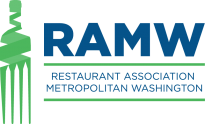You are here
PPP Clarifications and Recommendations 4/22
Dear Operator,
We received many questions from you in search of guidance on the Payroll Protection Program (PPP). Our partner, Matt Hetrick of CPA Eats provided some guidance to help answer some of your most pressing questions.
However, before we get into that shared guidance, we want to start by addressing the elephant in the room, which is that we are fully aware that PPP in its current form DOES NOT work for our industry. We are fully aware that it has to be fixed and that additional funding does not resolve nor address all the deficiencies of this program. States from all across the country are working furiously to get this resolved. There is an aggressive campaign in place to fix PPP so it works for our unique industry, focused on extending the covered period and reducing the 75% payroll usage requirement. This will LIKELY not be addressed until Congress is back in session in May, however there is a slim chance they could address it tomorrow. We do understand that May is too far away considering some of you have already been approved for the loan and you are all suffering today. There is also an opportunity for the White House or Treasury Department to make these modifications. All avenues are being pursued and actively lobbied by state and national industry leaders. With that, CPA Eats has provided the below suggestions to serve as guidance in the interim, until the outstanding issues with PPP are resolved. This guidance should not replace guidance from your lender, CPA, accountant or counsel.
Guidance from CPA Eats
If you received the PPP loan, the determination to keep the loan will largely come down to working capital on hand and your expectation of being able to achieve forgiveness.
- We highly recommend putting the money from the PPP loan into a separate bank account and only spending it on qualified expenses (payroll, rent, and utilities, generally). If the loan is spent, make sure to have an accurate accounting of each dollar spent.
- Determine if you need an immediate cash infusion from PPP funds. This is determined by examining your working capital, cash on hand, money in the bank, operating status and sales
- When to return the loan:
- If you are in a strong working capital position and are currently closed, without plans to bring staff back at full force within the timeframe currently required by the PPP rules, be careful about your spending decisions with the PPP loan funds. You may find that the best course of action is to monitor how the PPP rules evolve over the next several weeks, rather than rushing to spend the money in a fashion that is not consistent with the long term success of your business. If the PPP rules do not change in a beneficial manner and you are not able to open up and bring your staff back by June 30th, you may be better off simply returning the money as you are not able to spend it in accordance with the rules.
- When to keep the loan:
- If you are operating at a high volume on delivery and takeout (more than 50% of prior year period sales) and have some money in the bank then PPP is likely highly beneficial for you, even if you have only a limited amount of employees on payroll and can only get partial forgiveness. Whatever you have forgiven is of benefit to you--you were still going to employ the employees and pay rent, regardless of the PPP.
- If you’re out of money and open or closed, but still have the expectation that you will be bringing back a full workforce eventually, the PPP is likely an outstanding program to help provide you with the working capital you need to keep going.
- If you don’t have cash right now, this is the most realistic way to get working capital. It is the only real source of working capital that is available.
- If you are open with a reduced payroll, you can use PPP to pay these people but don’t use it just to put everyone back on the payroll.
- While a small portion of the PPP funds can be used for rent and utilities, you should be focused on rent abatement conversations with your landlords at this time, particularly if you are shut down. The PPP loan rules do not allow you to achieve forgiveness without spending the vast majority of PPP funds on payroll, and you should be looking for a sustainable long term structure for success that works for your restaurant, your employees, and your landlord. Borrowing short term money to pay rent during the shutdown should not be your default if you do not expect PPP forgiveness, especially in an environment where landlords are able to adjust mortgage terms and are obligated to pass the savings through to tenants.
- Remember - any PPP funds that are not spent can be returned. You should not spend wastefully.
If you didn’t get the PPP loan in the first round, there are a few steps that should be taken immediately.
- Connect with your bank now. If we learned anything from the first round of applications, it is that the money will go quickly. If you aren’t hearing back from your main bank at all, look into non traditional lenders that aren’t banks. Click here for lender recommendations from SBA.
- If you submitted an application and it was denied, make sure whoever you worked with before is going to effectively execute your loan. You should not assume that your loan application will automatically be resubmitted, and you should take every step to ensure that it is resubmitted.
- Make sure you are connecting with a person at your bank during this process. You need to look for a firm answer. Call and email until you speak with someone directly.
PPP vs. Employee Retention Credit (ERC)
- The ERC might be a better option for any business that has a decent-sized working capital reserve that is either operating at a limited ongoing level (less than 50% of ongoing sales) or currently dormant. The PPP loan might work better for businesses who are either about to run out of money, or who already ran out of it.
- What is the ERC?
- The Employee Retention Credit is a fully refundable tax credit for employers equal to 50 percent of qualified wages (including allocable qualified health plan expenses) that Eligible Employers pay their employees. This Employee Retention Credit applies to qualified wages paid after March 12, 2020, and before January 1, 2021. The maximum amount of qualified wages taken into account with respect to each employee for all calendar quarters is $10,000, so that the maximum credit for an Eligible Employer for qualified wages paid to any employee is $5,000. You can get access to this credit by reducing upcoming deposits or requesting an advance credit on Form 7200, Advance of Employer Credits Due To COVID-19. Click here for Form 7200, and for more information.
- You CANNOT utilize both PPP and ERC, so make sure to weigh the pros and the cons on the front end.
If you have additional questions, you can connect with Matt Hetrick, directly. While these are extremely uncertain times, we cannot share a blanket answer that works for each restaurant, and ultimately, the decision and loan strategy is going to be made based on the unique nature of your restaurant.
We are here as always to support you during these uncertain times and provide you with information that will help you make the most educated decision. As more details become clear, we will share.
Be safe. Be kind.
Best,
Kathy




















